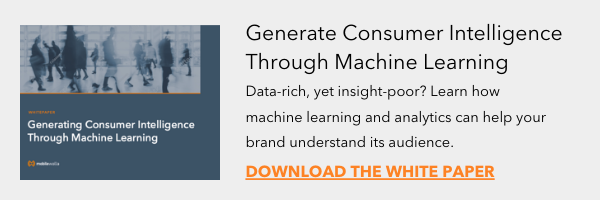Clean data is essential for success in predictive modeling and machine learning. Here’s why you need data cleansing to overcome “dirty” data issues and create a complete, unbiased database that’s free of fraud, duplicates, discrepancies, and structural errors.
What is Data Cleansing?
Data cleansing, also known as data cleaning, is an important first step in preparing data for predictive modeling or analysis. It refers to the process of removing or modifying data that is incorrect, fraudulent, incomplete, improperly formatted, or duplicative. It produces a quality data set that is validated, standard, uniform and easy for your algorithms to work with.
Why Does Predictive Modeling Need Clean Data?
Predictive models, regardless of the sophistication of the algorithms employed, are only as good as the data used to train them. Incorrect data yields inaccurate insights.
In addition, poorly formatted, unstructured data can’t easily be sorted by computers. When reviewing entries under gender, for example, a human might understand that “woman”, “f” “female”, and “fem” all mean the same thing, but a machine will consider them different unless told otherwise.
Data insufficiency is also a problem. A simple algorithm trained with a greater scope and scale of data produces more accurate, predictive insights than an advanced algorithm fed with limited data. Third-party data enrichment is a common workaround, but whenever data is compiled from multiple sources, extra care must be taken to reach consistency and resolve duplicates.
- For further reading, download the white paper: Maximize Your AI Efficiency with Enriched Customer Data
Elements of Clean Data
What does clean data look like? If you’re preparing for predictive modeling exercises, your data should have the following qualities.
1) Complete and Unbiased
42% of business and technology decision-makers say that lack of unbiased, quality data is the greatest barrier to AI adoption in their businesses. Many brands only have access to first-party data collected via direct interaction with their customers. This data is inherently biased and limited, because it only tells the story of current customers, and not of prospects or other individuals outside of the current audience base.
Furthermore, first-party data usually only describes interactions with the brand, and not necessarily demographic or behavioral information that would be useful in identifying potential new customers.
Data enrichment is the best solution to this problem. By partnering with a trusted data provider, you can supplement your first-party data with third-party data that illuminates additional insights within your current and potential customer base.
2) Consistent and Organized
Data points need to be expressed consistently for predictive models to operate accurately. Inconsistencies may arise from entry errors, typos, corruption in storage or transmission, different data definitions, and variations in naming conventions. Resolving inconsistencies is an important, albeit manual, process that is key to enabling more predictive models.
3) Free of Fraud
In today’s connected world, mobile data is in high demand. However, the mobile programmatic buying market loses $16 billion annually to fraudulent traffic. Whenever you deal with mobile data, you need to employ advanced means of identifying fraud.
Mobilewalla’s data cleansing tools include a combination of deterministic pattern discovery, AI and machine learning-based methods that yield heuristic patterns to detect fraudulent devices, location data, IP addresses, and more.
- For further reading, download the technology brief: Fraud Detection in Mobile Programmatic Advertising
4) Duplicate Resolution
Databases need to be checked for duplicates, especially when more than one data source is involved. Some data analysts choose to remove potential duplicate records altogether, rather than utilizing valuable time and resources resolving them.
A more effective strategy would be to use the mobile advertiser ID (MAID) to build a persistent customer identity across channels. Not only does this resolve database duplicates by indexing consumer behavior according to the MAID, but it also helps brands study and analyze behavior across channels.
- For further reading, download the white paper: Building a Persistent Customer Identity: Strategies for Success
5) Compliant with Privacy Regulations
The increased regulatory environment surrounding consumer data storage and usage affects digital businesses everywhere. Whether you collect your own first-party data or work with a third-party data provider, you must remain in compliance with legislation like Europe’s General Data Protection Regulation (GDPR) or the California Consumer Privacy Act (CCPA).
- For further reading, see How to Keep Privacy Mandates from Impacting Your Marketing Strategy
Data Enrichment & Data Cleansing Services
Since depth and breadth of data is so important for training machine learning algorithms, data scientists often choose to work with data providers that offer both data cleansing services and data enrichment services.
At Mobilewalla, we aggregate data from multiple sources, then apply data cleansing and fraud detection measures with a combination of deterministic, artificial intelligence, and machine learning techniques to generate highly accurate data that can be used to make predictions, create profiles, and perform data analysis.
Connect with our data experts to learn more about Mobilewalla’s feature-rich data enrichment offerings that harness the most comprehensive repository of consumer behavior and demographic data in the industry.

Mobilewalla
Start making more informed business decisions and effectively acquire, understand, and retain your most valuable customers. Get in touch with a data expert today

